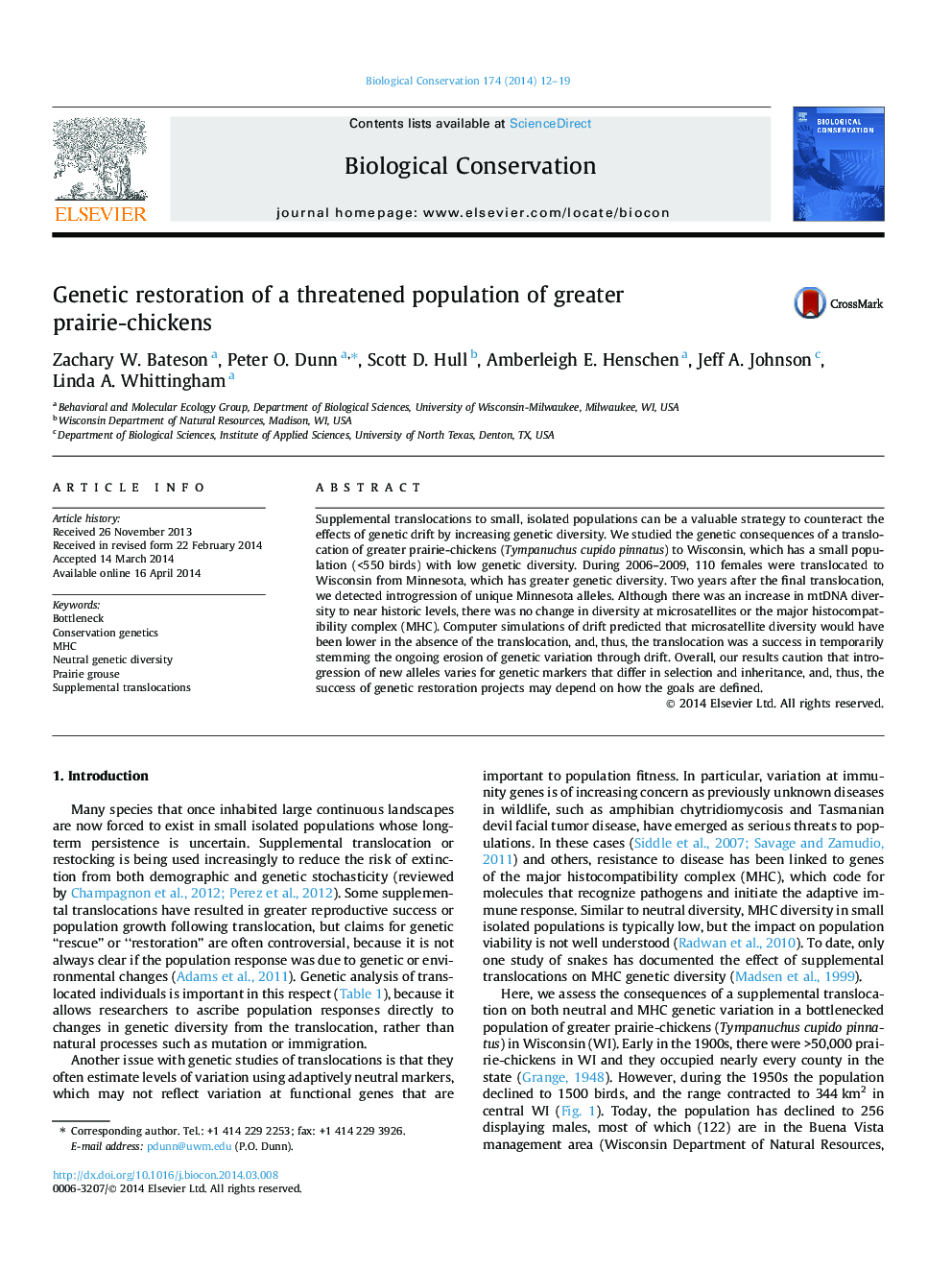| Article ID | Journal | Published Year | Pages | File Type |
|---|---|---|---|---|
| 6300250 | Biological Conservation | 2014 | 8 Pages |
Supplemental translocations to small, isolated populations can be a valuable strategy to counteract the effects of genetic drift by increasing genetic diversity. We studied the genetic consequences of a translocation of greater prairie-chickens (Tympanuchus cupido pinnatus) to Wisconsin, which has a small population (<550 birds) with low genetic diversity. During 2006-2009, 110 females were translocated to Wisconsin from Minnesota, which has greater genetic diversity. Two years after the final translocation, we detected introgression of unique Minnesota alleles. Although there was an increase in mtDNA diversity to near historic levels, there was no change in diversity at microsatellites or the major histocompatibility complex (MHC). Computer simulations of drift predicted that microsatellite diversity would have been lower in the absence of the translocation, and, thus, the translocation was a success in temporarily stemming the ongoing erosion of genetic variation through drift. Overall, our results caution that introgression of new alleles varies for genetic markers that differ in selection and inheritance, and, thus, the success of genetic restoration projects may depend on how the goals are defined.
